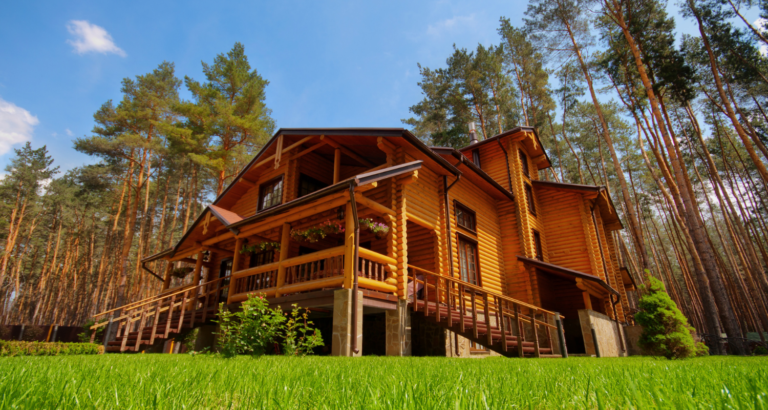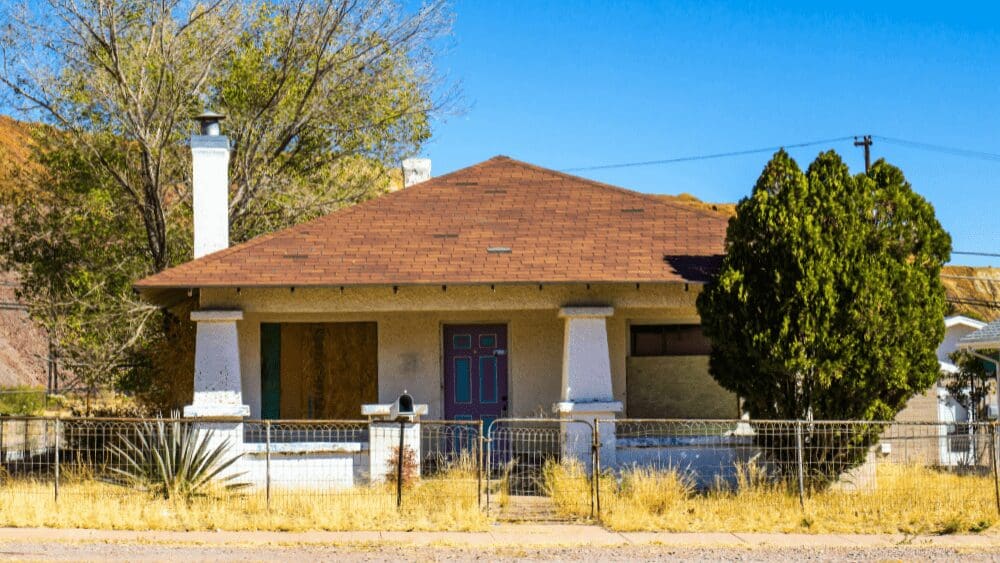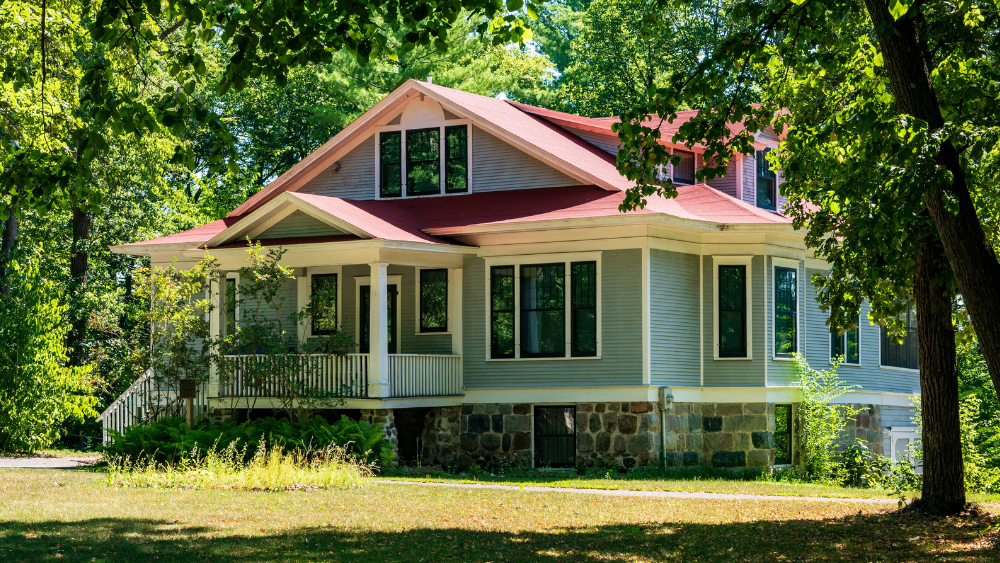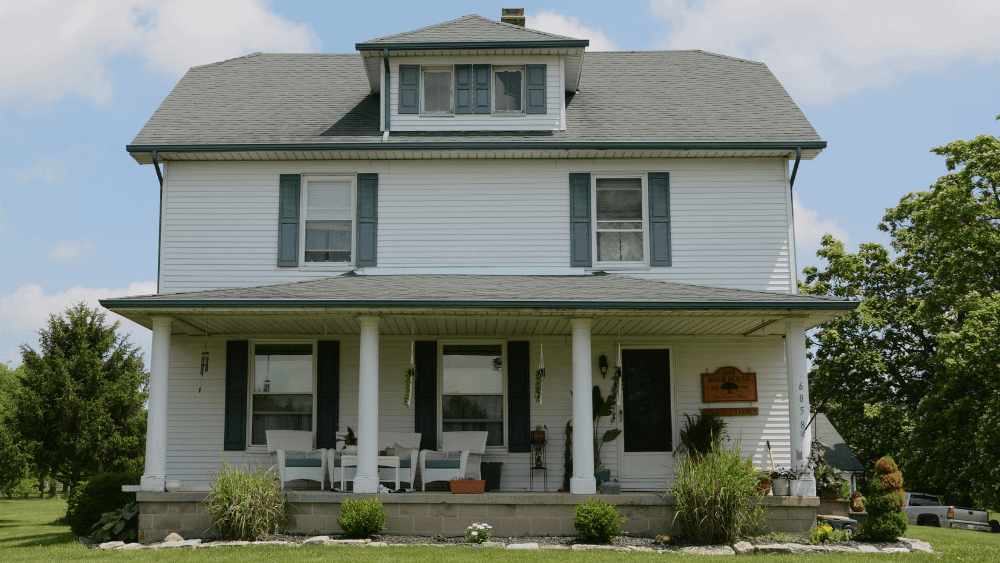
Scandanavian settlers built the first log homes during the 17th century, and today these homes dot the landscape from New England to the Pacific Northwest and Alaska. But whether your log home has a lengthy history or was built relatively new, any log home won’t last long without meticulous TLC. “A common misconception of log homebuyers is that log homes are impervious to the elements and are built to last forever with little maintenance,” writes Wayne Bell, owner of Log Home Care in Springboro, Ohio, and whose business provides maintenance to between 400 and 500 log homes in 14 states each year. While all homes need upkeep, log home maintenance goes beyond what you might encounter taking care of a home in the city or suburbs. A log home’s greatest enemies? Moisture, sun exposure, extreme temperatures, insects, and microorganisms. Here are a few ways to keep your log home strong and beautiful year-round. A log home needs a visual inspection at least once a year, notes Kathy Murdock of Perma-Chink Systems, Inc., a manufacturer of log home cleaners, sealers, stains and finishes since 1981. The sun’s UV rays break down the lignin in wood cells, weakening the fibers and causing cracks and weathering, according to the National Association of Home Builders (NAHB). You’ll want to check for signs of drying wood, aging, and any pests that might want to make your home a snug hideaway. Warnings signs include: Depending on where you live, you may be more likely to face certain log home maintenance issues than others. The U.S. Forest Service notes that wood decays faster in the Southeast and on the Northwestern coast than elsewhere because of high rainfall and warm, humid weather. But all log homes eventually show signs of the elements and age. Regular cleaning of your log home exterior can prevent the need for future repairs. Plus, if your stain needs refreshing or a topcoat (more on that below), it’s better to start with a surface that’s clean of dirt, pollen, spider webs, bird droppings, mold, and other grime, these experts say. Even new wood needs cleaning and conditioning because of “mill glaze” (a glossy type of film that develops on milled lumber) or from being out in the elements. You can try PermaChink Log Wash, a bleach-free, low-pH wood cleaner. Bell also suggests a weak dilution of Dawn dishwashing soap with water. Start at the bottom of an area where you can work for 20 to 30 minutes at a time, and gently apply the suds with a long-handled soft-bristle brush or broom, letting the soap do the work. Bell recommends using a brush for washing a truck or camper, such as the AutoCraft 8-inch multi-level brush with 48-inch metal pole or the Ettore Poly Fiber Soft General Wash Brush. Then rinse from the top down with a low-pressure garden hose or a pressure washer with a low-pressure nozzle. Murdock recommends a washer with 2500 to 3000 psi with an output of 2 to 3 gallons per minute and a 15-degree fan-tip nozzle. “If it [the soap] drips down over water, you won’t get the streaks,” she says on a free webinar for log homeowners. Log cabins are prone to mold and mildew growth, especially without good air circulation around the exterior. One way to remove stains and restore wood to its natural color is with a product such as Wood ReNew, a biodegradable percarbonate-based cleaner, after you wash your logs. An alternative for removing mold or mildew is this mixture from the NAHB: Wearing goggles and rubber gloves, apply the solution to the affected area with a hand-pump garden sprayer. Allow it to set for five to 10 minutes, then pressure rinse thoroughly with clean water. Chlorine left on wood will damage any coatings applied over it, the NAHB warns. Chinking or sealing your log home prevents air, insects, and moisture from squeezing between any gaps of your home’s logs, according to the Log Home Store, which has provided maintenance tips and supplies for log homes since 1999. Chinking itself is a textured mortar-like material that can be used in gaps up to five inches wide; when in a contrasting color, it becomes a design feature. Older homes used clay lime and sand to seal between the logs. However, modern chinking is acrylic-based and more durable, these experts say, because it expands and contracts while the logs or timbers move but still adheres tightly. For any gap that’s greater than 1 inch in diameter, fill the space first with a backer rod, then apply the chinking over the rod. This ensures that the chinking sticks to the top and the bottom of the logs. Chinking should be no more than a half-inch deep so it doesn’t rip, Murdock says. “More is not better.” Log Home Store recommends: To gauge how much you’ll need, try this Chinking Coverage Estimator. If using a 5-gallon pail, apply with a bulk loading gun such as the Albion 20 oz. Bulk Gun and follow plate, which loads the gun automatically. Apply it with a light but firm touch, like frosting a cake, Murdock says. Allow to dry according to the manufacturer’s instructions. In addition to chinking between the logs, you’ll want to seal any upward-facing checks in the logs that could collect water with log home caulking specifically designed for this purpose, Bell says. Do not use standard caulking products from home improvement stores that you might choose to seal around a tub or sink. You can apply this type of caulk or sealant, which comes in a range of colors, around door and window openings, the Log Home Store says. It recommends Weatherall UV Guard Premium; Saschco Conceal, Log Builder, or Through the Roof; or PermaChink Energy Seal or Woodsman. A log home will need wood stain and topcoat, but how often depends on where you live and the wear and tear. Don’t just automatically apply a topcoat each year as a preventive measure, Murdock says. “It could get so thick, it starts to peel.” Instead, check the condition of your stain, preferably after rainfall or after you’ve washed the home’s exterior. Does any water bead or sheet away? If so, the stain or topcoat is in good shape. If the water darkens the wood, the topcoat is likely gone. You also can check if your home needs stain or topcoat once the house is dry by using masking tape. Apply a piece to one of the logs, make sure it’s stuck firm, then pull it off. If you notice about 40% to 50% of the tape covered with finish, then you need to re-stain, she says. Murdock recommends using an organic solvent such as S-100 or StripIt to remove old topcoat and stain before applying any new product. Some log homeowners will opt for media blasting (or using an abrasive pressure blaster) with small particles such as baking soda, crushed glass, or walnut shells to remove old finish, but Murdock considers this a “last resort” and better left to a contractor. Hiring a professional sandblasting service for such a job costs anywhere from about $470 to $1,600, depending on the size of the area you target, but these pros will prep your exterior to avoid any damage to your windows, gutters, and other areas. You’ll need to wash away any debris afterward. Moisture is probably the most destructive natural hazard to wood, the NAHB says. While coating the wood provides protection, you’ll also want to prevent any pockets of moisture through clogged drains and downspouts, as well as overgrown landscaping. Keep plants and shrubs at least 18 inches away from log walls to ensure good air circulation, Bell says. Murdock suggests installing a gravel path around your log home about 24 to 36 inches wide to provide a breezeway. Don’t use any biodegradable material such as mulch or river rock, which can splash water against your house. “Water management is extremely important in log cabins, both for the integrity of the logs themselves and for maintaining a dry interior,” notes Kate Ziegler, a New England real estate investor who helps her parents preserve the pre-Revolutionary War log cabin where she grew up in rural Pennsylvania. Some modern log homes have contemporary foundations and basements, which makes this a bit easier; but others, such as her family’s historic cabin, may have “slab” foundations or be built directly on a concrete pad at ground level. So any water that might pool in a basement has the potential to enter your living space instead. She recommends keeping any dirt or mulch away from the lowest logs of your home. With any wood-based home, catching pests in time can stop excessive decay. Long-horned beetles, carpenter bees, and termites love log homes, but bed bugs, flies, borers, spiders, squirrels, chipmunks, and even woodpeckers also can leave their mark. If you treat your log home with borate — a natural chemical compound of oxygen and boron — you likely don’t need to inspect the wood as often for signs of pests. Try PenaShield Borate Wood Treatment and Preservative. Listen for any strange noises from beneath the floor, on the ceiling, or inside the walls. Depending on the size and level of infestation, you can fumigate a cabin on your own, but if you find this difficult, schedule an inspection and treatment with a professional exterminator. (Pest control prices in the United States cost an average of about $170 for assorted insects, but vary by treatment.) Seal and fix cracks and openings to keep pests at bay. In addition, cover all food and tuck it away in the fridge or other storage containers, just like when you’re camping. Clean all garbage bins regularly to remove any food scents that can attract bugs or small animals. The log home is a “fundamental American construction concept,” according to the Log Homes Council and NAHB. In fact, the demand for log and timber-frame homes has grown in recent years, accounting for $940 million in sales in 2017 and spurring online traffic for log-home companies during the COVID-19 pandemic to rise as much as 600%. That said, log home maintenance does take a commitment. Bell has met many log homeowners underestimated the work involved. “[People] fall in love with the idea of a log home: There’s a lot of romance and history and craftsmanship. … It causes people to become myopic,” he tells HomeLight. So residents and buyers must find a log home’s character and allure to be well worth the work required. Ziegler, for example, has fond memories of gathering around the wood stove with her parents, her sister, and the family dogs, especially on cold days. “Log homes are charming,” Ziegler says. “I’m not sure if it’s the warmth of the texture of the wood, or something about them that feels relaxed and unfussy by nature, but they blend with the environment in the summer and look cozy and welcoming covered in snow.”1. Inspect your log home once a year.
2. Wash the exterior of your log home with a gentle soap.
3. Remove stains, mold, and mildew
4. Check the chinks in your home’s armor, so to speak.
5. Stain and protect the outside of your log home.
How to test whether your cabin needs a new topcoat
Options to strip our logs
Tips for effective staining
6. Examine your landscaping and drainage at least once a year.
7. Be diligent about pest control.
Log homes: high maintenance, but worth it



